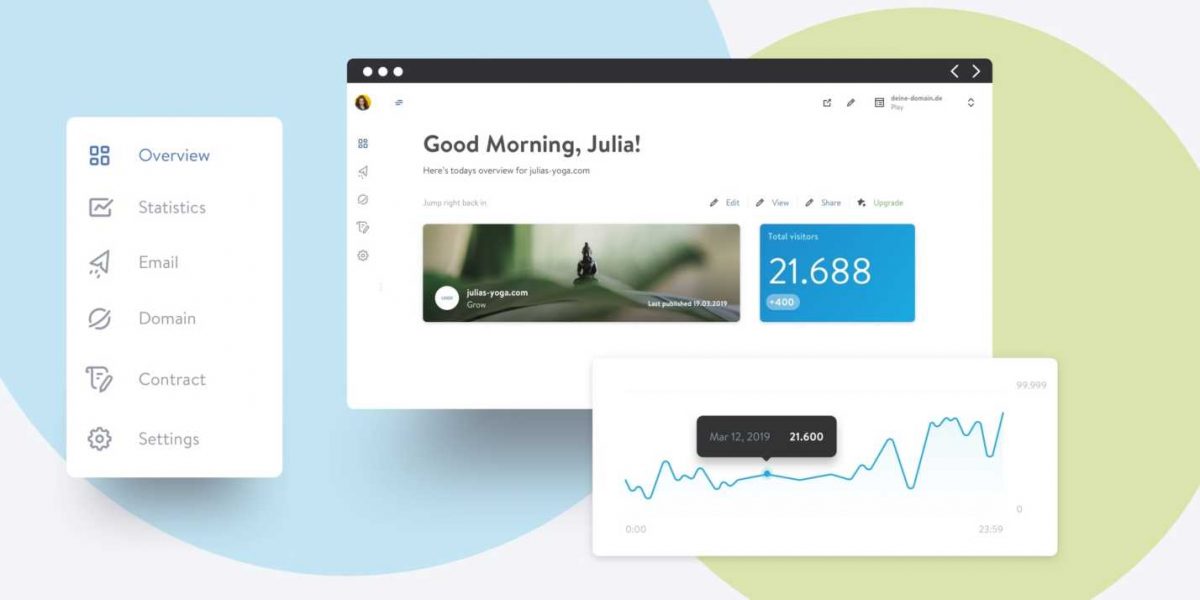The Importance of Responsive Design in Digital Marketing – A Quick Introduction to the Principles
Responsive web design has become a cornerstone of digital marketing and user experience. The rise of mobile devices, tablets and other gadgets means that customers are accessing the internet through a variety of different mediums. As such, it’s essential for businesses to ensure their websites are accessible on all platforms.Responsive web design (RWD) allows you to create a single website that responds to the user’s screen size, rather than creating separate versions of your site for desktop computer monitors, mobile phones and tablet devices. This article will explore the principles behind responsive web design and why it’s so important in today’s digital landscape.
What is Responsive Web Design?
Responsive web design is a website methodology that allows you to create a single website that responds to the user’s screen size, rather than creating separate versions of your site for desktop computer monitors, mobile phones and tablet devices. This is achieved by the website’s code, which detects the type of device used to access it and uses the necessary styling to display a version of the site that is optimized for that device. A good example of responsive web design in action is the tech giant, Apple. When you visit Apple’s homepage, you’ll notice that it’s a single web page, but appears to be formatted for different devices and screen resolutions. This is because Apple’s website is built with responsive web design, allowing it to be viewed in its entirety on any device.
A Quick History of Responsive Web Design
Although responsive web design has only become the standard in recent years, the concept has been around since the internet’s early days. In fact, the first website ever built was created in 1990, with its designer, Tim Berners-Lee, using a single HTML page that would detect the type of browser being used to access it and subsequently display a version of the page optimized for that device. However, it wasn’t until 2007 that responsive web design became a more widespread concept. That year, Ethan Marcotte wrote an article for A list Apart, called “Responsive Web Design”. In his piece, Marcotte argued that creating separate websites for different devices would become unsustainable as the number of web-connected devices continues to increase. He suggested that designers and developers should create websites that respond to different screen sizes and device types, rather than creating a different site for each device type.
Advantages of Responsive Web Design
There are a number of advantages associated with responsive web design. Perhaps the most significant is that it allows businesses to maximize their website’s potential. One site that is optimized for all devices means that potential customers can view your site on their desktop computer, laptop, tablet or mobile phone. This will help to boost your site’s traffic and ultimately its sales. Another advantage of responsive web design is that it allows you to cut back on your website’s development costs. Since you will only have a single website, you won’t have to create different versions for each device type. As such, responsive web design will help you to reduce your costs, while still remaining competitive in the digital space.
Disadvantages of Responsive Web Design
Although responsive web design is generally considered a positive way of designing websites, it does come with certain downsides. These include a slight increase in your website’s load times and an increase in the amount of server space required to host your site. You can combat these issues by using a Content Delivery Network (CDN), which will help to load your site more quickly and reduce your hosting costs. Another potential issue is that responsive web design can cause frustration among customers who are using a non-responsive device. If they try to navigate through your site using a computer that isn’t optimized for the website, they may find that certain aspects of your site aren’t easy to access. This can be particularly problematic if you have a lot of content on your site. As such, it’s important to make sure that your site is responsive across all devices, so that all of your customers can navigate it as easily as possible.
Key Elements of Responsive Web Design
As we’ve explored, responsive web design is an important concept that enables websites to be displayed on any device. It is important to note that there are several different types of responsive web design. The following sections will explore the different types of responsive web design and provide examples of how each works. Mobile-first design – With this type of responsive web design, you begin by creating a single website for desktop devices, such as computers. Then, you scale down this design for smaller devices like smartphones and tablets. This means that the smaller devices have to fit all the content from the larger site. Another way to look at it is that you are creating a website as if you only had a mobile device to work with. Then, you scale up the content for larger devices. This type of responsive web design is generally considered best for larger companies, due to the amount of time it takes to create the original, single design before scaling it down for mobile devices. Adaptive design – With adaptive design, you create a single website that uses CSS to scale its elements based on the screen size of the device accessing the site. This type of responsive web design is generally considered best for mid-sized businesses that want to create a single website, but still have some control over its design. Static design – This type of responsive web design is the most basic level of responsive design. It doesn’t take into account different screen sizes and simply scales the website down to fit on the screen of a smaller device. Although static design has its place, it’s generally not recommended as a go-to method of responsive design because it doesn’t allow for any customization based on the device accessing the site.
Conclusion
As the number of people accessing the internet via mobile devices continues to rise, it’s becoming increasingly important for businesses to ensure their websites are accessible on all devices. In response to this, designers have created the responsive web design process, which allows them to create a single website that responds to the device accessing it. A responsive website allows customers to easily navigate through your content and discover the products or services you have to offer, ultimate website traffic increasing your sales.





